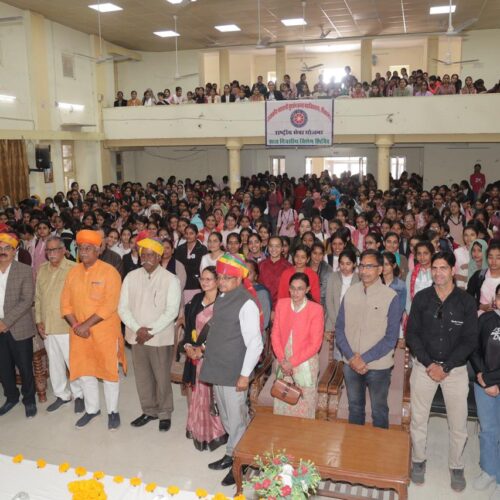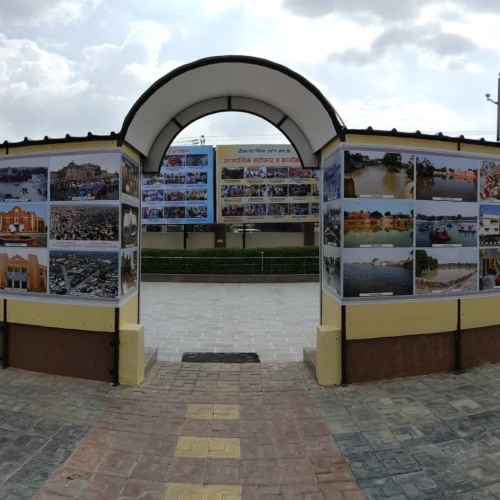India–Russia “Indra-2025” Joint Drills Enter Main Phase in Rajasthan: Russian Tech and Firepower on Display
Bikaner / Mahajan Range, Rajasthan, October 13, 2025 — The main phase of the Indra-2025 India–Russia counter-terrorism and joint operations exercise is now underway at the Mahajan training range near Bikaner, Rajasthan.
Over the coming days, Indian and Russian forces will simulate high-intensity urban warfare, hostage-rescue operations, sabotage-group neutralisation, counter-IED missions, and multi-domain coordination.
From the Russian contingent’s side, the drills provide an opportunity to showcase a suite of modern systems—armored vehicles, unmanned aerial vehicles (UAVs), electronic warfare (EW) assets, communications and battlefield management systems, logistics and fire support capabilities. Below is an in-depth look at the Russian hardware, tactics, and operational integration as observable in Indra-2025.
Strategic Context & Objectives
While the public narrative highlights the objective of fostering a “united front against terrorism,” the exercise also carries deeper strategic signaling:
- Interoperability & Doctrine Convergence: India and Russia aim to refine joint command, control, and tactical procedures so that their forces can operate seamlessly in anti-terror or hybrid environments.
- Technology Demonstration: Russia is able to field selected advanced systems in a cooperative setting, thus strengthening defense ties and offering India exposure to its latest capabilities.
- Operational Learning & Reverse Exchange: Indian units may draw lessons from Russian approaches to drones, EW, combined arms maneuvers, logistics under contested environments, while Russian units get to test their systems in Indian terrain (especially desert) and under Indian operational practices.
- Signaling: Exercises such as Indra also serve diplomatic and strategic signaling — reinforcing Russia’s presence in India’s security eco-space, and India’s ability to partner with major powers beyond just Western alignment.
Russian Armored & Mechanised Systems
BTR-82A / BTR-82 (8×8 Wheeled IFV / APC)
One of the prominent Russian armored platforms likely involved in the drills is the BTR-82A (and variants).
Technical Highlights
- The BTR-82A is a modernised 8×8 wheeled infantry fighting vehicle / armored personnel carrier derived from the older BTR-80 design.
- It is powered by a KAMAZ 740.14-300 turbo diesel engine delivering 300 hp.
- On-road speed can reach around 80 km/h, with a range of about 600 km.
- The BTR-82A’s firepower consists of a 2A72 30 mm autocannon coupled with a 7.62 mm PKT coaxial machine gun. The turret is stabilized in two axes, allowing more accurate fire while moving.
- It features modern optics and fire control, including the TKN-4GA sight system and commander’s panoramic vision module (TKN-AI) with laser rangefinder.
- Protection is improved compared to legacy BTRs: a multi-layered floor to mitigate mine/IED blast effects, energy-absorbing seats, and a hull with laminated materials (e.g. Kevlar layers) to resist small arms fire and shell splinters.
- The BTR-82A is amphibious, and has NBC (nuclear, biological, chemical) overpressure protection systems, smoke grenades, central tire pressure regulation, and integration with satellite navigation (GLONASS/NAVSTAR) systems.
Role & Use in Indra-2025
In the exercise, Russian mechanised units using BTR-82A (or variants) may operate in combined arms columns, conducting patrols, blocking enemy escape routes, providing mobile fire support, carrying assault squads for urban or semi-urban battle scenarios, and collaborating with UAV and EW elements. The BTRs may also be used in rapid response tasks—such as inserting quick reaction forces to hostage zones or reconnaissance points.
Deploying wheeled (rather than tracked) IFVs has benefits of speed, lower maintenance and fuel consumption, and better mobility on desert terrain, though at the cost of somewhat lighter armor compared to tracked infantry fighting vehicles.
Unmanned Aerial Systems: Russian UAVs & Loitering Munitions
One of the standout facets of modern warfare is unmanned systems (drones) in intelligence, surveillance, target acquisition (ISTAR) and strike roles. The Russian side is reportedly using UAVs both for surveillance, electronic warfare, strike, and data relay.
Orlan-10 UAV
A likely candidate among the Russian UAVs in the exercise is Orlan-10 (Орлан-10).
Capabilities & Characteristics
- The Orlan-10 is primarily a reconnaissance / ISR UAV, developed by the Special Technology Center (STC) in Saint Petersburg.
- It features a composite fuselage with reduced radar signature.
- Typical deployments use squadrons of 2–3 drones: one for primary reconnaissance (at altitudes 1,000–1,500 m), one for electronic warfare or interference, and another acting as a data relay. A full system may include up to 5 platforms.
- Specs (approximate / open sources)
– Maximum takeoff weight (MTOW): ~15 kg (payload ~6 kg)
– Speed ~150 km/h
– Combat (operational) range ~110 km, ferry range ~600 km
– Endurance: up to ~16 hours in favorable conditions
– Ceiling: up to ~5,000 m - There is also an Orlan-30 variant introduced around 2020, which adds a laser designation module to aid precision weapon delivery.
Role in Indra-2025
In the exercise scenario, Orlan UAVs may be used to conduct wide-area reconnaissance of terrain and threat positions, detect enemy movement, map hostile strongpoints, guide artillery or missile strikes, and provide real-time intelligence feeds to command elements. The UAVs may also be used to support electronic warfare missions—jamming enemy UAVs or interfering with enemy communications. In hostage-rescue drills, Orlan may locate hostile positions, monitor movement, or guide assault teams.
Because of modular deployment (recon, EW, relay), these UAVs provide flexibility to the Russian UAV contingent in managing contested electromagnetic environments.
Loitering Munitions (e.g. Lancet)
Beyond pure reconnaissance UAVs, Russia also fields loitering (suicide) munitions, capable of identifying and striking targets. One such system is Lancet (often associated with ZALA, the Russian UAV/loitering munition family).
Capabilities & Description
- The Lancet loitering munition can carry explosive payloads (HE, fragmentation, shaped charge) and is designed to loiter over a target zone, identify a target via onboard sensors, and then dive to strike it.
- Maximum operational range is reported around 40 km (depending on variant)
- Maximum take-off weight is ~12 kg in some variants.
- In combat mode, its terminal velocity dive can reach speeds up to ~300 km/h; it may also perform “air mining” roles by intercepting or neutralizing enemy UAVs mid-flight.
- Its guidance uses optical / TV-based systems, with radio link control, and possibly multiple frequency channels to resist jamming.
Role in Indra-2025
In strike-oriented modules, Russian loitering munitions like Lancet may be employed to engage high-value targets (e.g. fortified enemy positions, vehicles, command nodes) identified via UAV surveillance. They provide a relatively low-cost precision strike capability, especially in contested zones where deploying larger attack aircraft may be riskier. In exercises, their use would also test integration with real-time targeting pipelines, rules of engagement, and deconfliction with manned systems.
Drone Launch Platforms & Truck-Mounted Systems
To rapidly launch, recover, and support UAV operations, Russia uses truck-mounted launcher and control systems. ArmyRecognition notes the presence of Orlan drone truck-mounted launchers, enabling rapid deployment of UAVs in the field.
Such systems reduce setup and recovery time, ensure mobility under combat conditions, and allow forward deployment of UAV assets alongside mechanised columns.
In combined maneuvers, these mobile UAV platforms can ride with mechanised brigades, enabling continuous ISR coverage even during movement.
Electronic Warfare & Counter-UAV Capabilities
In modern counter-terrorism and hybrid warfare environments, controlling the electromagnetic spectrum is crucial. Russian units in Indra-2025 are reported to be actively deploying EW assets to counter enemy drones, communications, and reconnaissance.
Although specific EW systems deployed in Indra-2025 are not publicly disclosed in detail as yet, Russia has several well-known EW suites and doctrine:
- Borisoglebsk-2 (R-330 series): A modular mobile EW complex capable of jamming enemy communications, GPS/GLONASS, and data links. It is widely reported in Russian ground forces inventories.
- Leer-2: A mobile EW module mounted on a Tigr vehicle, used to suppress enemy reconnaissance systems, especially UAVs.
- Trona-1: Navigation support / positioning system used onboard vehicles (e.g. BTR-82A) to integrate satellite navigation into battlefield management, which might resist jamming and ensure robustness.
- Shielding, filtering, anti-jam communication links, secure data relays: In a combined force structure, Russian doctrine emphasizes redundancy, frequency hopping, encryption, and hardened comms to reduce the effect of EW interference.
In the exercise context, Russian and Indian units will practice countering enemy UAV threats, testing the resilience of communication / BMS (battle management systems) links, and executing EW suppression of hostile reconnaissance or command nodes.
For example, in hostage-rescue simulations, Russian EW units may attempt to jam enemy comms and deny UAV surveillance to the adversary, while protecting friendly UAVs or communications from jamming.
Command, Control, Communications & Battlefield Management
A critical underpinning of such complex joint operations is the communications backbone and command & control (C2) architecture. Russia brings mature systems for real-time situational awareness, integrated command, and multi-domain coordination.
Key components (typical in modern Russian systems and likely part of Indra-2025) may include:
- Battle Management Systems (BMS): For real-time tracking of friendly and enemy units, mission planning, and shared situational awareness across nodes.
- Data links and secure communications: That synchronize UAV feeds, artillery / fire control, command nodes, and logistic elements.
- Satellite navigation & inertial systems integration (GLONASS, inertial fallback), particularly useful in degraded or jammed environments.
- Forward command posts / mobile C2 vehicles: To maintain commanders close to the action, allowing rapid decision loops and local control.
- Network-centric coordination modules: For integrating drone feeds, EW nodes, reconnaissance, fire support and maneuver units.
These systems allow Indian and Russian units to pool ISR, task UAVs, allocate shooter assets, update routes dynamically, and deconflict fires in dense operational environments.
Logistics, Casualty Evacuation & Ammunition Resupply
An often under-emphasized but vital component in such exercises is logistics and battlefield sustainment—particularly under contested conditions. Russian participation is involving logistical modules for ammunition delivery, casualty evacuation, and first aid under fire.
Key logistic / support elements likely in play:
- Armored or protected logistic vehicles: To deliver ammunition, fuel, spare parts close to forward echelons.
- Drone / UAV resupply: Use of UAVs or FPV drones to drop small payloads (e.g. ammunition, medkits) into forward or isolated positions, reducing vulnerability of convoys. Russian drills reportedly include drone-based ammunition delivery.
- Battlefield medical modules & casualty evacuation drills: Practicing rapid first aid, stabilization, and extraction of wounded personnel under fire or contested zones. These modules test both medical readiness and the security of evacuation routes.
- Field maintenance / recovery: Repair and recovery of disabled vehicles under simulated threat, managing spare parts, repair teams in forward zones.
- Fuel & power support: Ensuring that UAVs, EW systems, communications nodes, and vehicles remain powered and refueled during intensive, multi-day operations.
In combined operations, Russian logistic and support units are expected to coordinate with Indian support structures, exercising cross-nation resupply, medical coordination, and synchronization of sustainment chains.
Tactics & Modules in the Field
Reconnaissance & Blocking
The exercise scenario reportedly begins with enemy sabotage / reconnaissance groups infiltrating populated terrain or border zones. Combined Indian-Russian teams conduct reconnaissance (via UAVs, human assets) to locate enemy groups and establish blocking positions to interdict their withdrawal.
Russian mechanised columns, with BTRs and armored assets, may be deployed to seal escape routes, supported by UAV surveillance and EW cover to deny enemy situational awareness or reinforce enemy misdirection.
Counter-Sabotage & Pursuit
Once infiltration groups are located, joint teams execute pursuit, cordon & search, and suppression fires. Russian tactics likely lean on combined arms—coordinated fire from armored vehicles, indirect fires (mortars, artillery, possibly guided munitions), UAV-guided strikes, and infantry maneuver. EW assets may attempt to jam or isolate enemy communications, degrade their intelligence feeds, or deny usage of enemy drones.
Hostage Rescue & Close-Quarter Combat
One of the more sensitive modules is hostage-rescue operations. According to TASS, Indian and Russian servicemen practiced a joint hostage-release drill, focusing on drone reconnaissance, strikes, and coordination.
In these drills, Russian UAVs may supply real-time imagery of hostage locations and enemy movement; EW units may suppress enemy sensors or communications; assault teams carried in BTRs or infantry squads may move under cover, supported by precision fires or loitering munitions. Speed, coordination, and minimizing collateral damage are key.
Hybrid Warfare & Multi-Domain Integration
Given modern threats, the drills also simulate hybrid scenarios—combining guerrilla, terrorist, and conventional elements, possibly under conditions of degraded communication, contested airspace, or electronic jamming. Russian forces are likely testing integration of EW, UAVs, C2, mechanised maneuver, and logistics under adverse conditions. The aim is to refine tactical flexibility, redundancy, and robustness.
Live-Fire & Precision Strike
As part of the exercise, joint live-fire modules are planned involving infantry fighting vehicles, drones, and precision-guided munitions.
In such modules, UAVs may designate or direct targets, mechanised vehicles supply direct fire, and precision loitering munitions or drone-launched projectiles may engage high-value or hardened targets. Russian proficiency in integrating drones and ground fire will be under focus.
Strengths, Risks & Operational Challenges
Strengths & Advantages
- Technological Synergies: Russia’s proven UAV, EW and BMS systems complement India’s domain experience, offering lessons and upgrades.
- Rapid Strike Capability: Loitering munitions and UAV-guided fires give Russian assets quick-strike options with less reliance on large platforms.
- Robust EW & Comms: A maturing Russian doctrine in electromagnetic control gives it potential edge in contested environments.
- Mobility & Flexibility: Wheeled armored platforms (e.g. BTR-82A) and mobile UAV systems allow high tempo operations in desert terrain.
- Logistical Depth: Russia’s ability to maintain forward sustainment under pressure, coordinate cross-nation support, and manage casualty flows strengthens operational resilience.
Risks & Limitations
- Terrain & Environment: Desert terrain, extreme heat, dust, and limited cover challenge sensors, optics, cooling, and maintenance.
- Electronic Interference & Countermeasures: India may deploy counter-EW or anti-UAV systems, jamming Russian systems or spoofing navigation.
- Rules of Engagement & Interoperability Hiccups: Differences in doctrine, communication protocols, and rules of engagement may slow real-time coordination.
- Collateral Risk in Hostage Scenarios: Precision targeting in populated terrain is inherently risky; miscalculations or latency in data links may raise friendly-fire or collateral damage risk.
- Sustainability under Stress: Sustaining high operational tempo over days—with maintenance, repair, logistics—will test both sides’ endurance.
- Redundancy & Fail-Safe: If UAVs or data links are degraded, fallback systems must work—reliance on high-tech systems can become a vulnerability if disrupted.
Observations & Significance
- Demonstration of Modern Russian Doctrine: Indra-2025 gives Russia an opportunity to showcase its concept of warfare—centered on drones, EW, rapid maneuver, and networked command.
- India’s Exposure to Russian Systems: Indian units will gain on-ground familiarity with Russian UAVs, EW, and BMS integration—insights that may influence future procurements or joint developments.
- Message to Region & Partners: Conducting a large-scale exercise with modern systems sends a signal to regional actors about India–Russia strategic closeness and capabilities, particularly in counter-terror and hybrid warfare.
- Testing Under Realistic Conditions: Desert terrain, coordination across services, contested electronic environment, and urban mock-ups create a realistic stress test for technologies and tactics.
Conclusion
As Indra-2025 enters its core phase, the Russian contingent is leveraging a blend of modern systems—BTR-82A armored platforms, Orlan UAVs for ISR and EW, loitering munitions, and advanced command, control, and electronic warfare assets—to execute complex counter-terror, hostage-rescue, and hybrid warfare scenarios in Indian terrain.
For India, this exercise is not purely symbolic. It offers a rare chance to benchmark Indian tactical practices against Russian doctrine under live conditions, assimilate advanced technology exposure, and refine interoperability on critical domains. Russia, in turn, is able to project strategic depth and technological relevance in the Indian security sphere.
In the days ahead, the success of Indra-2025 will depend on how robust the communications infrastructure remains under jamming, how resilient UAV and sensor networks stand up to countermeasures, and how seamlessly mechanised, reconnaissance, and EW elements synchronize under dynamic conditions. The lessons drawn could influence not just bilateral doctrines, but India’s future doctrine for multi-domain and drone-enabled warfare.
BY DEFENCE JOURNALIST SAHIL | T.I.N. NETWORK
राजस्थान में “इन्द्र-2025” युद्धाभ्यास का मुख्य चरण प्रारंभ — भारतीय धरती पर रूसी हथियारों, ड्रोन तकनीक और सामरिक शक्ति का प्रदर्शन
बीकानेर / महाजन रेंज, राजस्थान | 13 अक्टूबर 2025
भारत और रूस के संयुक्त सैन्य अभ्यास “इन्द्र-2025” का मुख्य चरण अब राजस्थान के महाजन फील्ड फायरिंग रेंज में शुरू हो चुका है। यह अभ्यास भारत-रूस रक्षा सहयोग के इतिहास में एक और निर्णायक अध्याय जोड़ रहा है, जिसमें दोनों देशों की सेनाएं आतंकवाद-विरोधी, शहरी युद्ध, बंधक-मुक्ति, इलेक्ट्रॉनिक युद्ध और बहु-डोमेन ऑपरेशंस का वास्तविक अभ्यास कर रही हैं।
आने वाले दिनों में दोनों सेनाएं उच्च तीव्रता वाले युद्ध परिदृश्यों का सिमुलेशन करेंगी — जिसमें दुश्मन की घुसपैठ, तोड़फोड़ करने वाले समूहों का सफाया, आईईडी निष्क्रियकरण, शहरी इलाकों में बंधक बचाव, और इलेक्ट्रॉनिक जैमिंग के बीच समन्वित कमांड संचालन शामिल है।
इस अभ्यास का सबसे बड़ा आकर्षण रूस की आधुनिक तकनीक और हथियार प्रणालियों की उपस्थिति है — जिनमें बख्तरबंद वाहन (Armoured Vehicles), UAV सिस्टम, इलेक्ट्रॉनिक वॉरफेयर (EW) मॉड्यूल, कम्युनिकेशन और बैटल मैनेजमेंट सिस्टम, लॉजिस्टिक और फायर सपोर्ट नेटवर्क प्रमुख हैं।
रणनीतिक संदर्भ और अभ्यास के उद्देश्य
‘इन्द्र-2025’ को सामान्य तौर पर आतंकवाद-विरोधी सहयोग के रूप में प्रस्तुत किया जा रहा है, लेकिन इसका असली उद्देश्य इससे कहीं गहरा है। यह अभ्यास भारत-रूस सैन्य तालमेल, तकनीकी समन्वय, और रणनीतिक साझेदारी की वास्तविक परीक्षा है।
1. इंटरऑपरेबिलिटी और डॉक्ट्रिन कन्वर्जेंस:
दोनों सेनाएं इस बात पर काम कर रही हैं कि आतंकवाद या हाइब्रिड वॉर जैसे परिदृश्यों में वे एक-दूसरे की कमांड, कंट्रोल और टैक्टिकल स्ट्रक्चर के साथ निर्बाध रूप से काम कर सकें।
2. तकनीकी प्रदर्शन:
रूस इस मंच के माध्यम से अपने उन्नत हथियार और प्लेटफॉर्म को भारत के सामने प्रस्तुत कर रहा है — जिससे रक्षा संबंधों की गहराई और भरोसा दोनों बढ़ते हैं।
3. पारस्परिक सीख और विनिमय:
भारतीय सेनाएं रूसी UAV, EW और संयुक्त आर्म्स ऑपरेशंस से सामरिक और तकनीकी सीख प्राप्त कर रही हैं, वहीं रूस को भारत के भौगोलिक और जलवायु परिवेश में अपने हथियारों और प्रणालियों की वास्तविक परीक्षण परिस्थितियाँ मिल रही हैं।
4. रणनीतिक संदेश:
यह अभ्यास केवल युद्धाभ्यास नहीं, बल्कि वैश्विक स्तर पर यह संदेश भी देता है कि भारत-रूस साझेदारी आज भी सामरिक, तकनीकी और रणनीतिक रूप से प्रासंगिक और प्रभावशाली है।
रूसी बख्तरबंद और मैकेनाइज्ड सिस्टम
BTR-82A / BTR-82 (8×8 पहिए वाला बख्तरबंद वाहन)
रूसी दल के मुख्य आकर्षणों में BTR-82A बख्तरबंद वाहन शामिल हैं, जिन्हें रूसी सेना आधुनिक ‘व्हील्ड इन्फैंट्री फाइटिंग व्हीकल’ या ‘आर्मर्ड पर्सनल कैरियर’ के रूप में इस्तेमाल करती है।
तकनीकी विशेषताएँ:
- 300 हॉर्सपावर वाले KAMAZ 740.14-300 टर्बो डीज़ल इंजन से संचालित
- सड़क पर अधिकतम गति 80 किमी/घंटा, ऑपरेशनल रेंज लगभग 600 किमी
- 30 मिमी की 2A72 ऑटोकेनन और 7.62 मिमी PKT कोएक्सियल मशीन गन
- ड्यूल एक्सिस स्थिरीकृत टरेट, लेज़र रेंजफाइंडर, और आधुनिक दृष्टि प्रणाली
- माइन-रेज़िस्टेंट फर्श, एनर्जी-एब्जॉर्बिंग सीटें, NBC (न्यूक्लियर-केमिकल) प्रोटेक्शन
- GLONASS / NAVSTAR नेविगेशन एकीकृत, और स्मोक ग्रेनेड लॉन्चर
इन्द्र-2025 में भूमिका:
ये वाहन रेगिस्तानी क्षेत्र में गतिशीलता, तीव्र प्रतिक्रिया, और मोबाइल फायर सपोर्ट के लिए आदर्श हैं। इन्हें दुश्मन की घुसपैठ रोकने, बंधक क्षेत्रों में फोर्स इनसर्शन, गश्त और त्वरित प्रतिक्रिया मिशनों में प्रयोग किया जा रहा है।
रूसी UAV और लूटेरिंग म्यूनिशन
Orlan-10 ड्रोन
रूसी सेना का प्रसिद्ध Orlan-10 UAV अब भारतीय धरती पर संचालन कर रहा है।
यह सर्विलांस, रीकॉन्नेसेंस, इलेक्ट्रॉनिक जैमिंग और डेटा रिले में सक्षम है।
तकनीकी जानकारी:
- वजन ~15 किग्रा, पेलोड ~6 किग्रा
- उड़ान रेंज ~600 किमी, ऑपरेशनल रेंज ~110 किमी
- उड़ान समय ~16 घंटे
- ऊँचाई सीमा ~5,000 मीटर
- मॉड्यूलर कॉन्फ़िगरेशन: एक रीकॉन, एक EW, और एक डेटा रिले ड्रोन
अभ्यास में भूमिका:
महाजन रेंज में Orlan-10 का उपयोग दुश्मन की मूवमेंट ट्रैकिंग, फायर डायरेक्शन, रीयल-टाइम इंटेलिजेंस, और बंधक स्थलों की निगरानी के लिए किया जा रहा है।
Lancet Loitering Munition
यह ‘कामिकाज़े ड्रोन’ के रूप में जाना जाता है, जो लक्ष्य पर मंडराता है और फिर सटीकता से हमला करता है।
मुख्य विशेषताएँ:
- अधिकतम रेंज ~40 किमी
- गति ~300 किमी/घंटा (डाइव फेज में)
- विस्फोटक वारहेड (HE / फ्रैगमेंटेशन / शेप्ड चार्ज)
- टारगेट पहचान के लिए इलेक्ट्रो-ऑप्टिकल सेंसर
- रेडियो-लिंक आधारित रिमोट कंट्रोल, मल्टी-फ्रीक्वेंसी चैनल
भूमिका:
इनका प्रयोग अभ्यास में उच्च-मूल्य वाले लक्ष्यों, जैसे दुश्मन के बंकर, वाहन या कमांड पोस्ट पर किया जा रहा है।
इलेक्ट्रॉनिक वॉरफेयर (EW) और एंटी-ड्रोन रणनीति
रूसी सेनाएं इलेक्ट्रॉनिक वॉरफेयर क्षेत्र में पारंपरिक रूप से अग्रणी रही हैं।
Indra-2025 में उनके कई EW सिस्टम्स शामिल हैं, जैसे:
- Borisoglebsk-2: दुश्मन की रेडियो संचार और GPS सिग्नल्स को जैम करने की क्षमता
- Leer-2: दुश्मन के ड्रोन नेटवर्क और सर्विलांस सिस्टम को बाधित करने के लिए मोबाइल मॉड्यूल
- Trona-1: सटीक नेविगेशन और BMS एकीकरण प्रणाली
प्रशिक्षण में उपयोग:
रूसी और भारतीय दल EW जैमिंग, UAV न्यूट्रलाइजेशन, और कम्युनिकेशन रेजिलिएंस टेस्टिंग पर फोकस कर रहे हैं, ताकि इलेक्ट्रॉनिक युद्ध की स्थिति में भी कमांड चैन बरकरार रहे।
कमांड, कंट्रोल और बैटलफील्ड मैनेजमेंट सिस्टम
रूसी सेना के पास अत्याधुनिक Battle Management Systems (BMS) हैं जो रीयल-टाइम डेटा लिंक, UAV फीड, और फायर सपोर्ट को एकीकृत करते हैं।
इन्द्र-2025 में इन प्रणालियों का प्रयोग संयुक्त कमांड सेंटर और मोबाइल C2 यूनिट्स के माध्यम से किया जा रहा है।
इससे भारतीय और रूसी दलों को रीयल-टाइम सिचुएशनल अवेयरनेस, फ्रेंडली और एनिमी यूनिट ट्रैकिंग, और क्विक मिशन अपडेट्स मिल रहे हैं।
लॉजिस्टिक्स, इवैक्यूएशन और सपोर्ट ऑपरेशन
युद्ध के दौरान केवल हथियार ही नहीं, बल्कि लॉजिस्टिक सपोर्ट और मेडिकल इवैक्यूएशन भी निर्णायक भूमिका निभाते हैं।
रूसी इकाइयाँ इस अभ्यास में सुरक्षित ईंधन आपूर्ति, गोलाबारूद पुनःपूर्ति, और ड्रोन आधारित रीसप्लाई मिशन कर रही हैं।
ड्रोन से गोला-बारूद और मेडिकल पैकेज अग्रिम मोर्चे तक पहुँचाने की तकनीक विशेष रूप से प्रदर्शित की जा रही है, जिससे ट्रक काफ़िले के खतरे कम होते हैं।
फील्ड टैक्टिक्स और युद्ध मॉड्यूल
1. रीकॉन्नेसेंस और ब्लॉकिंग ऑपरेशन:
संयुक्त दल पहले दुश्मन की घुसपैठ का पता लगाते हैं, फिर UAV और मानव गश्त के सहारे उन्हें ब्लॉक करते हैं।
2. काउंटर-सबोटेज और पर्स्यूट मिशन:
BTR वाहनों और ड्रोन से लैस यूनिट्स दुश्मन पर घेरा डालकर सर्च एंड डिस्ट्रॉय ऑपरेशन करती हैं।
3. बंधक मुक्ति (Hostage Rescue):
यह सबसे संवेदनशील मॉड्यूल है, जिसमें ड्रोन से रीयल-टाइम इंटेलिजेंस मिलती है, EW यूनिट्स दुश्मन की कम्युनिकेशन बाधित करती हैं और बख्तरबंद यूनिट्स तेज़ी से लक्ष्य क्षेत्र में पहुँचती हैं।
4. हाइब्रिड वारफेयर सिमुलेशन:
गुरिल्ला, आतंकवाद और पारंपरिक युद्ध के मिश्रित परिदृश्य — ताकि दोनों सेनाएँ बहु-डोमेन स्थिति में प्रतिक्रिया क्षमता का परीक्षण कर सकें।
फायदे और चुनौतियाँ
मुख्य फायदे:
- रूसी UAV, EW और BMS सिस्टम भारत की युद्ध रणनीति को तकनीकी रूप से सशक्त करते हैं।
- लूटेरिंग म्यूनिशन से तेज़ और सटीक हमले संभव।
- रेगिस्तानी क्षेत्र में उच्च गतिशीलता और लॉजिस्टिक दक्षता।
मुख्य चुनौतियाँ:
- रेगिस्तान की धूल और तापमान सेंसरों व इंजन को प्रभावित करते हैं।
- इंटरऑपरेबिलिटी में संचार प्रोटोकॉल का अंतर कठिनाई पैदा कर सकता है।
- जामिंग या काउंटर-UAV वातावरण में सिस्टम की स्थिरता की परीक्षा होगी।
सामरिक महत्व और निष्कर्ष
‘इन्द्र-2025’ केवल एक सैन्य अभ्यास नहीं, बल्कि यह भारत-रूस रक्षा साझेदारी की जीवंत अभिव्यक्ति है।
रूसी दल ने इस अभ्यास में अपने BTR-82A बख्तरबंद वाहन, Orlan-10 UAV, Lancet ड्रोन, और इलेक्ट्रॉनिक वॉरफेयर नेटवर्क के माध्यम से अपनी तकनीकी क्षमता का प्रभावशाली प्रदर्शन किया है।
भारत के लिए यह अभ्यास रूसी प्रणालियों को समझने, इंटरऑपरेबिलिटी बढ़ाने, और नई युद्ध-तकनीकों को आत्मसात करने का अवसर है।
भविष्य के युद्धों में जहाँ ड्रोन, इलेक्ट्रॉनिक युद्ध और नेटवर्क आधारित ऑपरेशन निर्णायक भूमिका निभाएँगे, वहाँ ‘इन्द्र-2025’ जैसी एक्सरसाइज़ भारत को बहु-डोमेन युद्ध की दिशा में और मज़बूती से तैयार कर रही हैं।














Add Comment